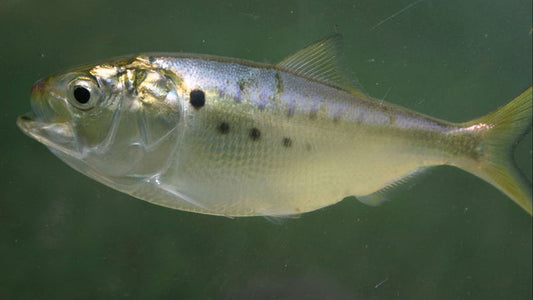All Points Fly Shop + Outfitter Blog

Inside the Magalloway Project: 78,000 Acres of ...
I recently attended a webinar that discussed a new and ongoing conservation collaboration between The Nature Conservancy, Rangeley Lakes Heritage Trust, Forest Society of Maine, and Northeast Wilderness Trust. What...
Inside the Magalloway Project: 78,000 Acres of ...
I recently attended a webinar that discussed a new and ongoing conservation collaboration between The Nature Conservancy, Rangeley Lakes Heritage Trust, Forest Society of Maine, and Northeast Wilderness Trust. What...

Scientific Anglers Striper Fly Line Review - Te...
For a few years I have been fishing the Scientific Anglers SONAR Titan Triple Density (3D)and SONAR Titan Full Intermediate series of lines for striped bass. With the various available...
Scientific Anglers Striper Fly Line Review - Te...
For a few years I have been fishing the Scientific Anglers SONAR Titan Triple Density (3D)and SONAR Titan Full Intermediate series of lines for striped bass. With the various available...

Reducing Atlantic Menhaden Catch Isn't Just Goo...
Last week I wrote a short writeup about the recent results of the Chesapeake Young-of-Year 2025 Survey. You can read that HERE. In that article you will see, just specifically...
Reducing Atlantic Menhaden Catch Isn't Just Goo...
Last week I wrote a short writeup about the recent results of the Chesapeake Young-of-Year 2025 Survey. You can read that HERE. In that article you will see, just specifically...

Shilton SL Fly Reel Review - Tested on the Water
I do a lot of saltwater fly fishing. Whether it's here in Maine for striped bass or on tropical flats for bonefish, permit, and tarpon. Over the years one of...
Shilton SL Fly Reel Review - Tested on the Water
I do a lot of saltwater fly fishing. Whether it's here in Maine for striped bass or on tropical flats for bonefish, permit, and tarpon. Over the years one of...

Chesapeake Bay 2025 Young-of-Year Striped Bass ...
Recently the Maryland Department of Natural Resources released their 2025 young-of-year (fish under the age of 1 year) striped bass survey results. In conclusion, they found that for the 7th...
Chesapeake Bay 2025 Young-of-Year Striped Bass ...
Recently the Maryland Department of Natural Resources released their 2025 young-of-year (fish under the age of 1 year) striped bass survey results. In conclusion, they found that for the 7th...

October Caddis Fly Tying Competition
It's back! We are holding the October Caddis Fly Tying Competition again this year.
October Caddis Fly Tying Competition
It's back! We are holding the October Caddis Fly Tying Competition again this year.